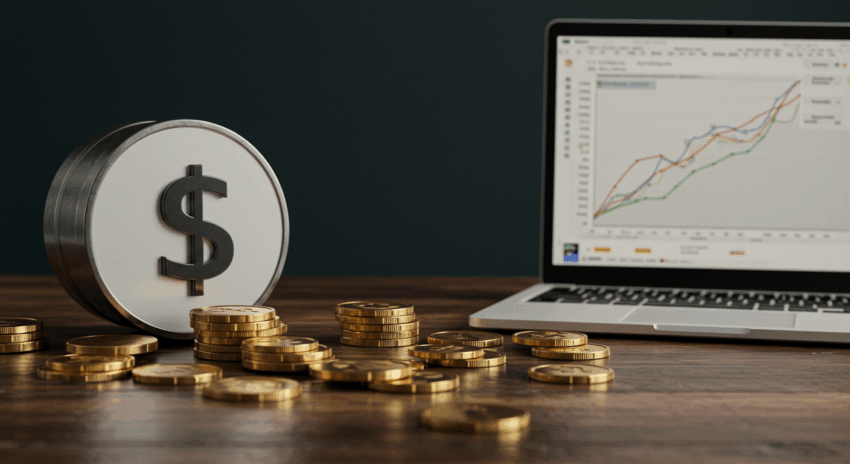The latest US inflation data has just been released, and the results have sent a wave of optimism through the financial markets. For months, conversations about the economy have been dominated by the rising cost of living, but this new report suggests a potential turning point. If you’ve been wondering when you might see some relief at the gas pump or in your monthly budget, this is news you need to understand. This article will break down exactly what these new inflation numbers mean, how they were calculated, and most importantly, how they could directly impact your personal finances in the coming months.
Deconstructing the May Inflation Report: The Key Figures
Every month, the U.S. Bureau of Labor Statistics releases the Consumer Price Index, or CPI. Think of the CPI as a comprehensive shopping cart filled with goods and services that the average urban consumer buys—from gasoline and groceries to rent and doctor’s visits. By tracking the total cost of this cart over time, economists can measure the rate of inflation.
The report for May 2024 contained some welcome surprises:
- Annual Inflation Rate: The CPI rose by 3.3% over the last 12 months. This is a noticeable slowdown from the 3.4% figure reported in April. While it may seem like a small change, in the world of economics, this is a significant step in the right direction.
- Monthly Change: Perhaps the most eye-catching number was the month-over-month change. From April to May, the overall index showed 0.0% change, meaning prices, on average, did not increase at all during that period. This is the flattest monthly reading in nearly two years.
This data suggests that the intense pressure of rising prices that has squeezed household budgets is beginning to ease. The primary driver behind this stabilization was a significant drop in energy prices, with gasoline falling by 3.6% during the month. This provided much-needed relief and offset increases in other areas.
Headline vs. Core Inflation: What’s the Difference?
When you hear economists and financial analysts discussing inflation, they often mention two different numbers: headline inflation and core inflation. Understanding the distinction is crucial for getting a clear picture of the economy’s health.
- Headline Inflation: This is the 3.3% figure we mentioned above. It represents the change in the total CPI basket, including all goods and services. It’s the number that most closely reflects the real-world cost of living for consumers because it includes necessities like food and fuel.
- Core Inflation: This metric excludes the more volatile categories of food and energy. Why? Because gas and food prices can swing wildly due to factors that have little to do with the underlying health of the economy, such as geopolitical events or weather patterns. By removing them, policymakers at the Federal Reserve get a clearer signal of the long-term inflation trend.
In May, core CPI also showed positive signs, rising by just 0.2% for the month—its slowest pace since last summer. On an annual basis, it cooled to 3.4%, the lowest level in over three years. This is a critical indicator that the Federal Reserve watches closely when deciding on interest rate policy, which is a cornerstone of modern finance.

The Ripple Effect: How Lower Inflation Impacts Your Wallet
Economic reports can often feel abstract, but this inflation data has tangible consequences for your everyday life and financial planning. Here’s how the cooling price increases could affect you.
1. Interest Rates and Borrowing Costs
The Federal Reserve’s primary tool for fighting high inflation is raising interest rates. This makes borrowing money more expensive for everything from mortgages and auto loans to credit card debt, which in turn slows down spending and cools the economy. With inflation now showing a clear downward trend, the pressure on the Fed to keep rates high diminishes.
While the Fed signaled it isn’t ready to cut rates just yet, this positive report makes future rate cuts more likely. If this trend continues, you could see:
- Lower mortgage rates, making home buying more affordable.
- More competitive interest rates on car loans and personal loans.
- A reduction in the variable APR on your credit card balances.
2. The Power of Your Savings
High inflation is the enemy of savers. If prices are rising at 5% and your savings account is only earning 1%, your money is actually losing 4% of its purchasing power every year. As inflation comes down, the value of your cash and savings is better preserved. This makes it a great time to review your financial strategy and ensure your money is working for you. For more insights on this, you can explore our resources on savings.
3. Your Investment Portfolio
The stock market generally loves news of lower-than-expected inflation. Investors see it as a sign that the Federal Reserve may soon be able to lower interest rates. Lower rates are good for businesses because they reduce borrowing costs, which can boost profits and, in turn, stock prices. The positive reaction in the markets following the report is a direct reflection of this optimism about the broader economy.
The Road Ahead: Cautious Optimism
While the May CPI report is undoubtedly good news, it’s important to remember that this is just one data point. The Federal Reserve has indicated it needs to see several months of sustained progress before it will feel confident enough to begin cutting interest rates. They are proceeding cautiously to ensure inflation is firmly on a path back to their 2% target.
However, consumers can take comfort in the fact that the trend is moving in the right direction. The intense price pressures of the last few years are clearly subsiding, paving the way for a more stable and predictable economic environment. Keep an eye on future economic releases to see if this encouraging development continues.
Frequently Asked Questions (FAQ)
What is the difference between inflation and the Consumer Price Index (CPI)?
This is a great question. Inflation is the general rate at which the prices for goods and services are rising, and subsequently, purchasing power is falling. The Consumer Price Index (CPI) is the specific tool or metric used to measure inflation. The CPI tracks the average change in prices paid by consumers for a specific basket of goods and services, and the percentage change in the CPI over a period is what we call the inflation rate.
If inflation slowed to 3.3%, why do prices for things like rent and dining out still feel so high?
This is a key point that often causes confusion. A lower inflation rate does not mean that prices are going down; it means they are increasing at a slower pace. The 3.3% figure means that, on average, prices are still 3.3% higher than they were a year ago. Prices for many items, especially in the services sector like housing (shelter) and restaurant meals, have accumulated significant increases over the past few years. These costs are often sticky and do not fall as quickly as more volatile items like gasoline. So, while the overall rate of increase has slowed, the high price levels we’ve reached will likely remain.



